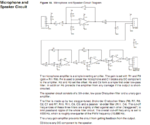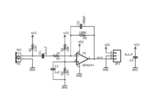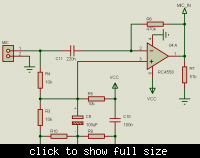Windmiller
Member level 4
Hi!
My idea is to connect an electret microphone without preamp, with the output directly to a PIC pin.
I believe it should be possible without the preamp just because I'm only interested in getting the frequency, not the dB(volume)
My first question is..
Am I right? Will I get enough signal without preamp to count the frequency, or is it to low for the PIC to notice it?
I made my "googling", but ended up here asking my question instead.. hopefully someone knows by their own trial and error.
My secound question is.. this one's stupid I know..
The output signal from an electret microphone varies from 0V and up? It is never a negative value here? :roll:
Thanks!
Regards,
Morgan
My idea is to connect an electret microphone without preamp, with the output directly to a PIC pin.
I believe it should be possible without the preamp just because I'm only interested in getting the frequency, not the dB(volume)
My first question is..
Am I right? Will I get enough signal without preamp to count the frequency, or is it to low for the PIC to notice it?
I made my "googling", but ended up here asking my question instead.. hopefully someone knows by their own trial and error.
My secound question is.. this one's stupid I know..
The output signal from an electret microphone varies from 0V and up? It is never a negative value here? :roll:
Thanks!
Regards,
Morgan



